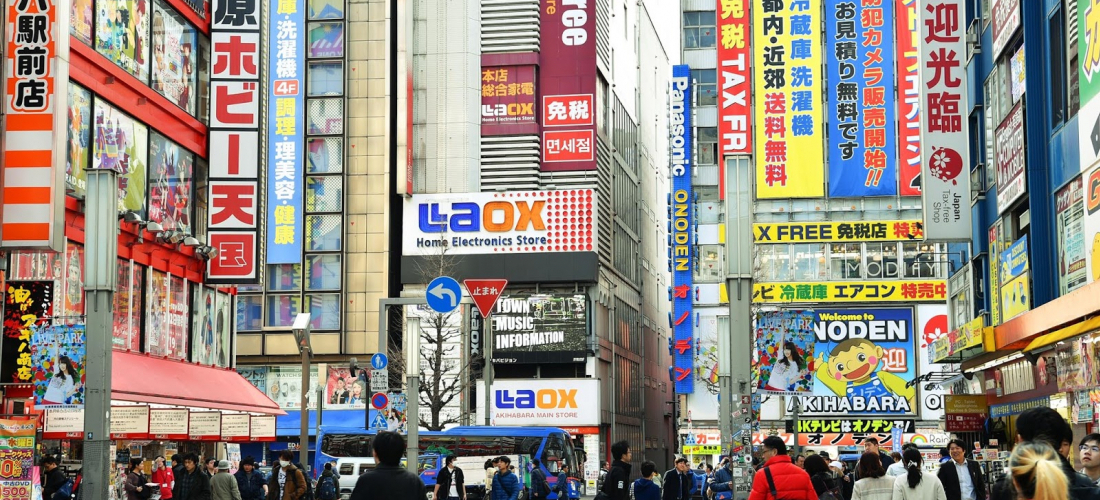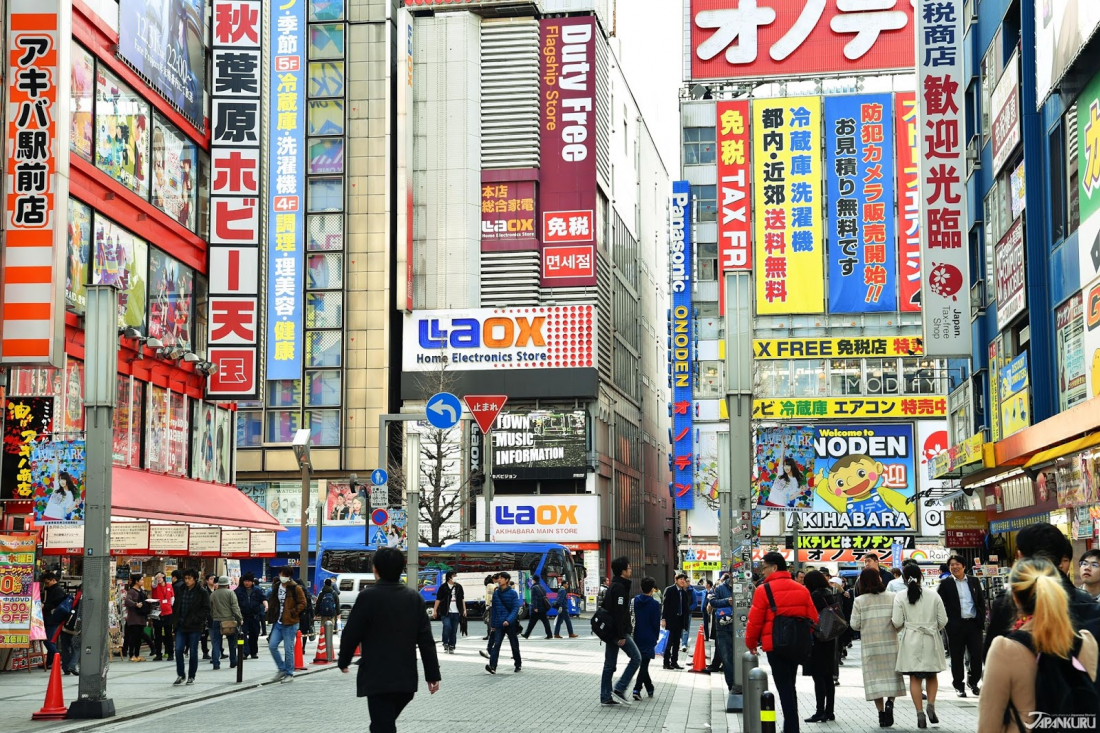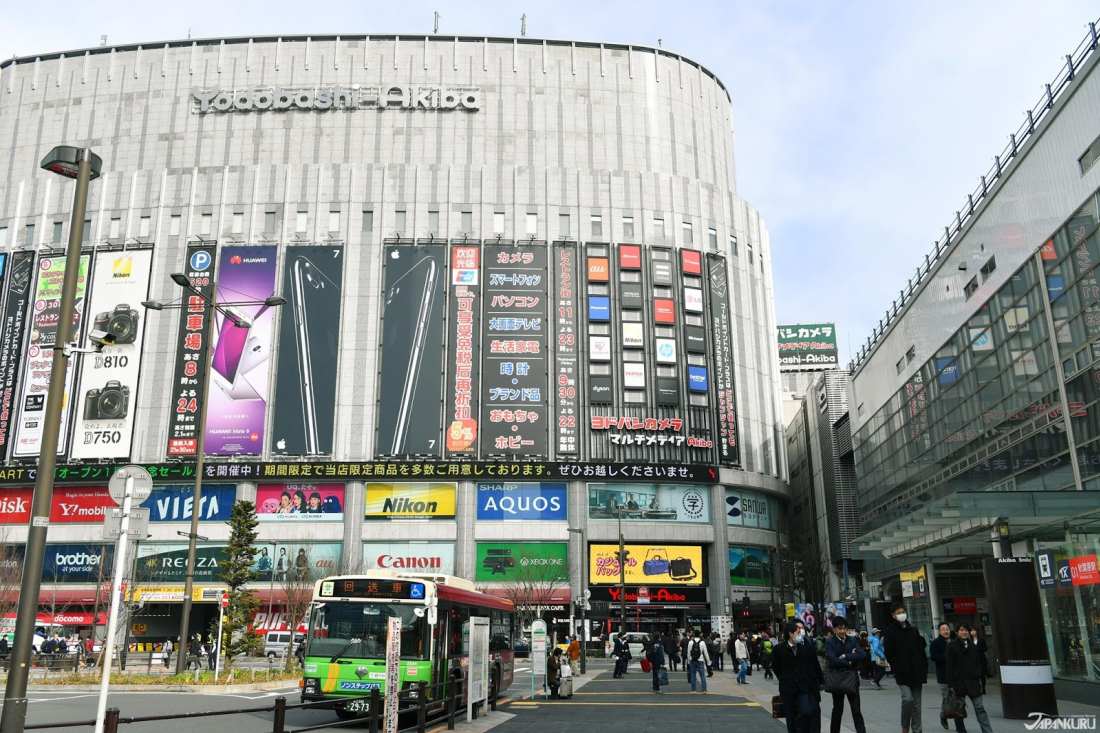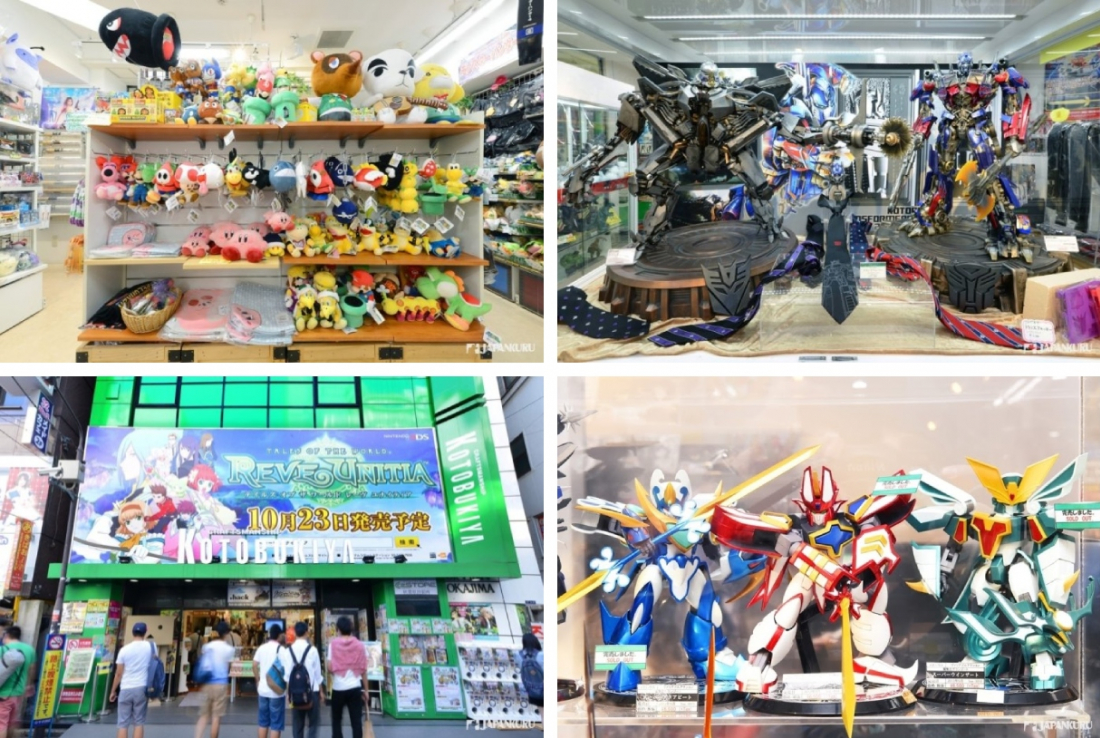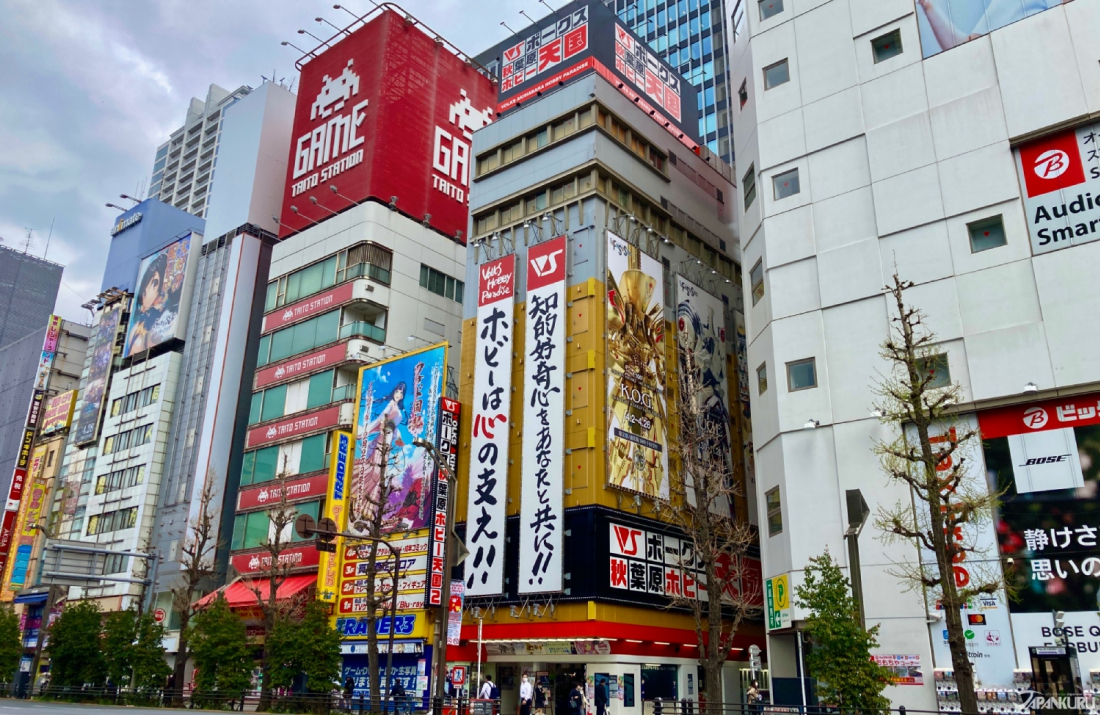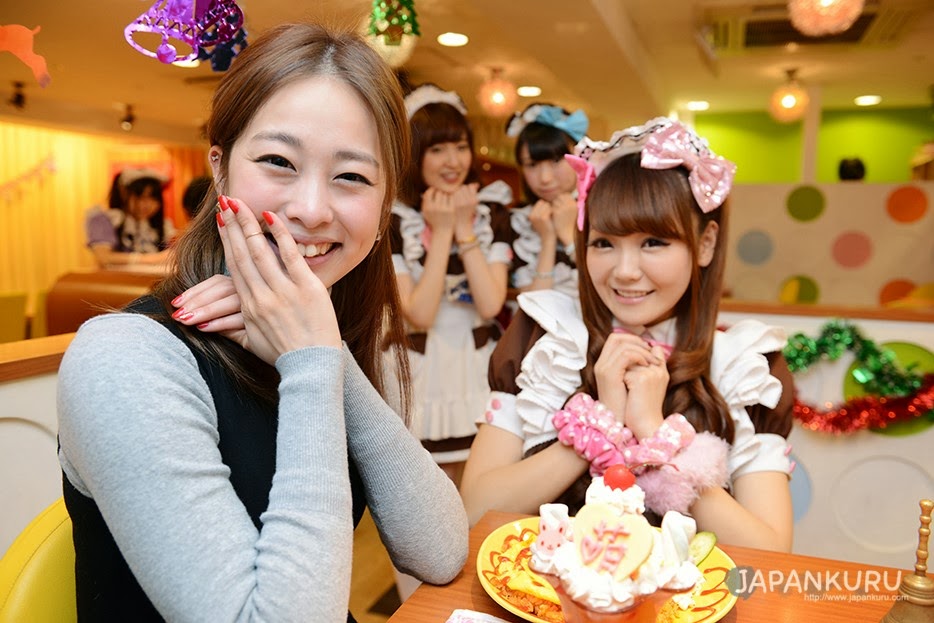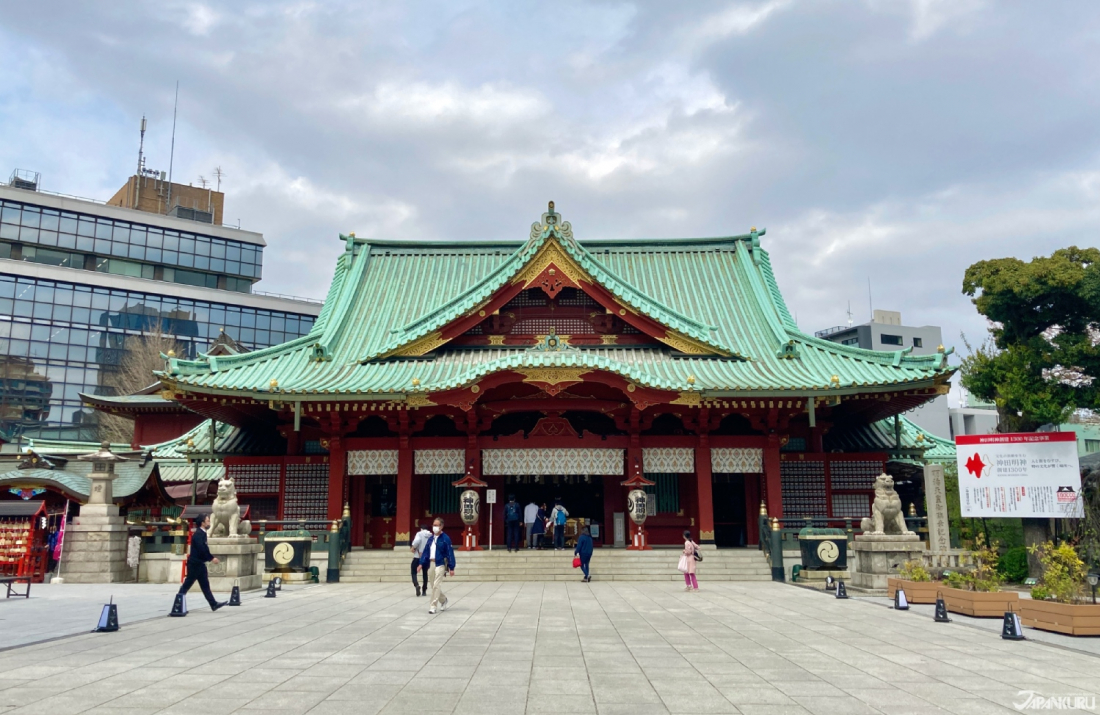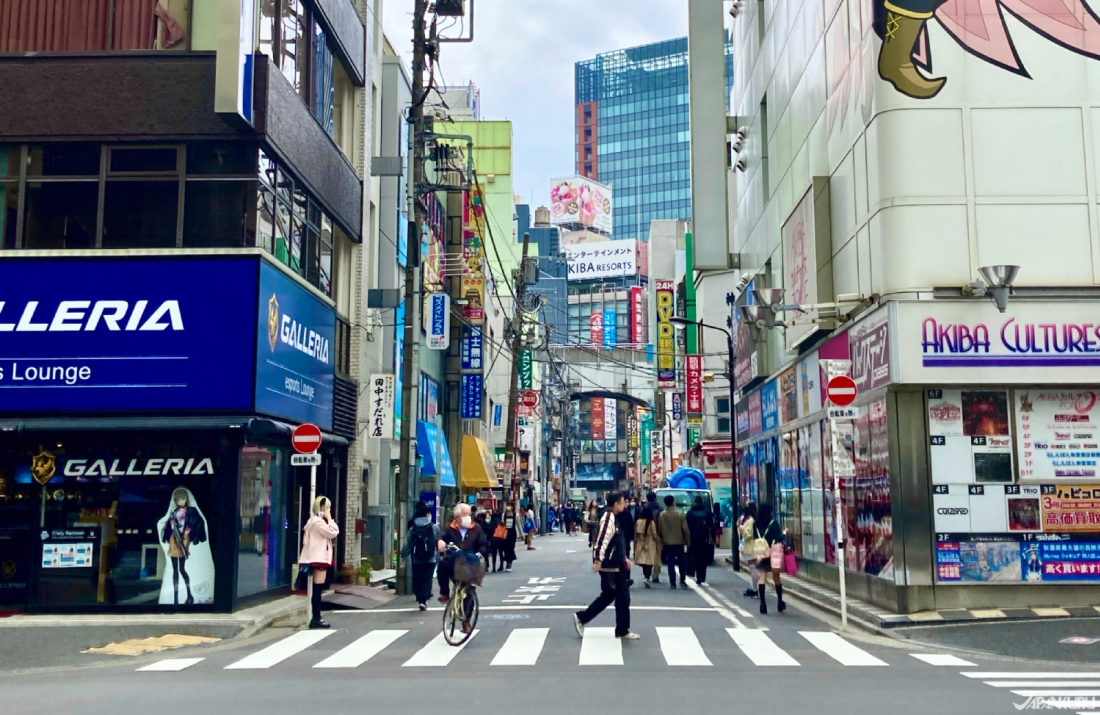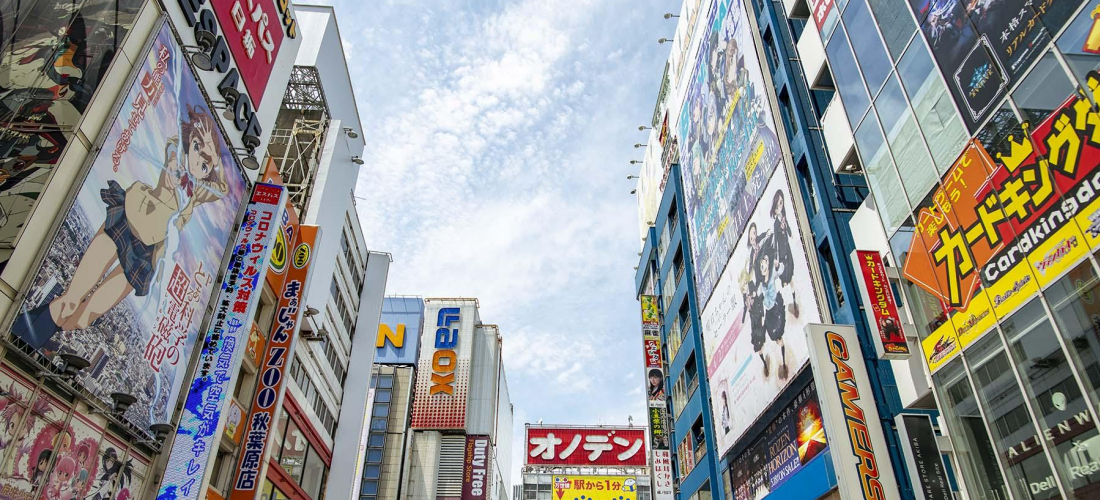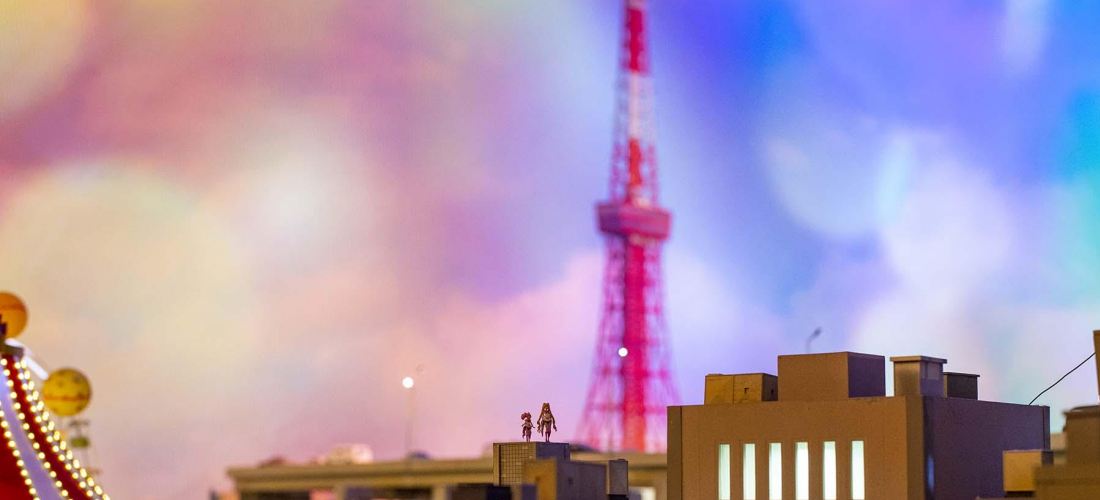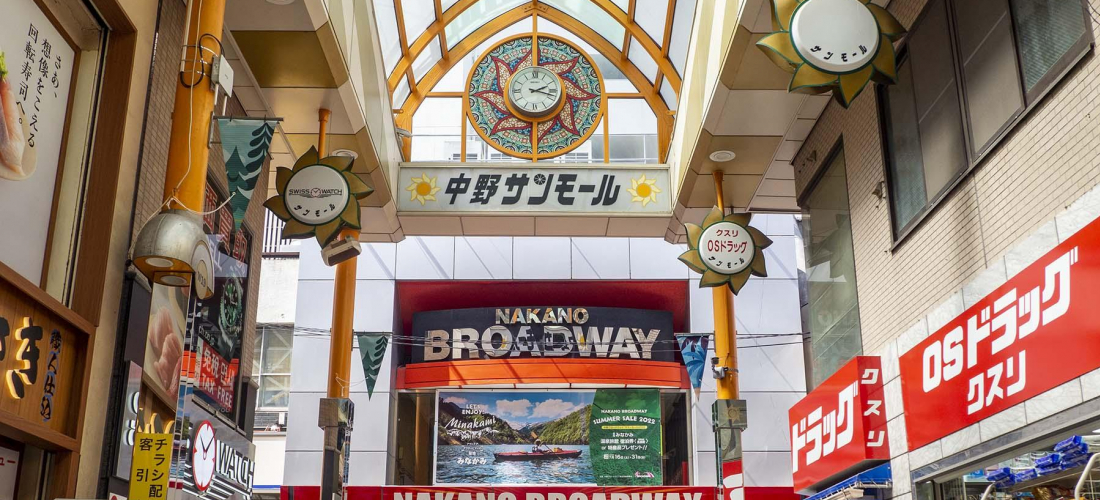CONTENTS
Sightseeing in Akihabara? Get ready for arcades, anime, technology, and even a little Shinto shrine history!
A Quick Look at Akihabara
A must-see for nerdy sightseers of all stripes, the Akihabara area of Tokyo gets its name from a Japanese god said to control fire, but perhaps it would have made more sense to find a god of electricity! The establishment of Akihabara Station sparked the growth of a large market in the late 1800s, and after World War II, Akihabara's sellers went from offering fresh produce to black-market goods, eventually leading to an explosion in household appliances. Since then, the Akihabara crowd has expanded to include all kinds of "otaku," and modern-day shoppers still flock to Akihabara to buy electronics both used and new, plus video games, anime and manga merchandise, cosplay materials, hobby goods, and a variety of other niche products. All kinds of hangout spaces have also popped up to let those with nerdy interests mix and mingle, including unique cafes and arcades that reach high into the sky. And of course, there is still a touch of Japanese tradition to be found in this unique Tokyo neighborhood!
Scrounge Up Some Great Deals on Tech
With origins as a marketplace for electronic goods, it's no surprise that there is still plenty of electronics shopping to be found in Akihabara. For the latest products sold brand new, a handful of large-scale major electronics chains have sprung up in the area, like Yodobashi Akiba, a Yodobashi Camera department store with six floors of electronic goods, a floor of clothing and lifestyle goods, a restaurant floor, and rooftop batting cages. Many Akihabara experts who know what they're looking for will avoid the enormous electronics department stores, however, and instead make their way to the small electronics stores selling new and used items down the smaller side alleys a little bit further from Akihabara Station. These shops have more specialized wares and staff, more unusual items, and sometimes unbeatable deals – if you get lucky!
Browse the Shelves of Anime Figures, Manga Volumes, and Endless Merchandise
Anime, manga, video game, and other character merchandise is big business in Akihabara, and there's no avoiding the many shops that specialize in these goods. Down the main street and along side alleys, there are stores selling figures of Gundam mechs and flirtatious anime heroines, cute character keychains, big stuffed Pokemon toys, pillows, posters, t-shirts, stickers, stationery, and all kinds of goods that are simultaneously tempting and clearly totally useless. Many well-known names in the business have one or more locations in Akihabara, including Animate, Lashinbang, Mandarake, and Surugaya, and for those feeling a little lost in the bustle of the area, the Akiba Cultures Zone is a 5-floor complex that makes an easy place to start. Like with electronics, though, part of the fun of Akihabara shopping is to explore the streets and enter all kinds of shops, big and small, to search for hidden treasures!
Play Games & Flip Tables in an Arcade
For a glimpse of Japan's famous arcade scene, there's nowhere like Akihabara! While the neighborhood's famously enormous Sega arcade closed its doors back in autumn 2020, the area still has a number of huge, multi-floor buildings dedicated to arcade games of every genre, ready to take up the mantle. Classic fighting games, rhythm games controlled by feet, hands, or drumsticks, shooting games controlled by big plastic guns, racing games controlled by big plastic wheels, and even some unusual games that are unlikely to be found outside of Japan (like our favorite, where you cause as much destruction as possible by flipping a real plastic table top), the arcades have just about everything. And while you can certainly spend hours going from game to game and quickly going through hundreds of yen, you can also take some silly photobooth pictures at a purikura machine (generally found in arcades), or even watch others play certain games at a level you're not likely to reach (sometimes audiences will even form around unbelievably good players). Akihabara's arcades are worth a look, whether you frequent them back home or you're a total newbie.
Eat with Some Unique Company at a Theme Cafe
There's only so long you can shop and game before a break is in order, and when the time comes, Akihabara's nerd culture has created some interesting options for rest and relaxation. The classic Akihabara choice is a maid cafe, where young women dressed in maid costumes serve guests cutesy food, pose for photos, and occasionally perform songs or dances (all for a price). It's an experience that rests somewhere on the border between uncomfortable and not-to-be-missed. (A certain level of irony might be a prerequisite for a visit, but don't let cynicism ruin your brief trip to a magical world of pink, frills, and finger hearts!) There are a number of popular maid cafes around Akihabara, including those with different themes (sometimes it's maids with animal ears, or maids in Japanese style costumes), but there are also cat cafes, owl cafes, and other kinds of themed cafes for anyone who isn't quite ready to hang with the maids (or has been there, done that). Up until January 2022, for 12 whole years, the Gundam Cafe right next to the Akihabara Station entrance was a must-see for fans of the beloved, long-lived world of Gundam. Perhaps the lack of foreign tourists proved to be a death blow for this unique eatery. But the Gundam Cafe has paved the way for other nerdy establishments of its kind, and we look forward to seeing what will follow in its footsteps.
Pray to the Shinto Gods at Kanda Myojin
Want to get away from the crowds of Akihabara's busy shopping streets and find a different kind of vibe? Just a few minutes on foot from Akihabara Station, the quiet grounds of the area's most popular Shinto shrine offer a different kind of Akihabara experience. Kanda Myojin Shrine was established 1,270 years ago, and is dedicated to three major deities, Daikokuten, Ebisu, and Taira no Masakado. In the Edo period (1693-1868), the shrine was important to both average citizens and the samurai class of Edo, even attracting the likes of Tokugawa Ieyasu (Japan's first shogun). These days, you're not likely to spot any samurai at the shrine, but visitors include tourists coming to see the beautiful architecture, locals out on walks, and plenty of nerdy folk taking a break from shopping. The shrine's omamori talisman offerings even include good luck charms said to ward off computer viruses and other electronics problems! Don't forget to grab your own omamori at Kanda Myojin to protect all your purchases before you leave Akihabara.
Kanda Myojin Shrine (神田明神)
2-16-2 Sotokanda, Chiyoda City, Tokyo
Official Website (jp)
Around Akihabara
Akihabara made a name for itself in postwar Japan through the sales of cheap electronics, and the area has grown into a mecca for all things nerdy, attracting visitors from all over the country (and all over the world). For anyone with a full wallet, an empty suitcase, and an interest in Japanese otaku culture, a visit to Akihabara could easily take up a whole day. But for those who want to squeeze a whole lot of Tokyo into a little bit of time, Akihabara Station is on the convenient JR Yamanote Line, which means it's easily accessible from just about anywhere in Tokyo! Plus, there are a few other areas nearby that are worth checking out at the same time. Just a 3-minute train ride (or 20-minute walk) to the north is Ueno (with its park, the zoo, museums, and plenty of nightlife), and about the same distance to the south of Akihabara is the Tokyo Station area. The more traditional neighborhood of Asakusa is only about 5 to 10 minutes away by train (depending on whether you take the Tsukuba Express or the Tokyo Metro), and while Kanda Myojin is popular in its own way, the shrine has nothing on the crowds that gather at Asakusa's famous Sensoji Temple! There's lots to do in Akihabara, but when you expand your options to include its surroundings, the possibilities are endless.
For more info and updates from Japan, check Japankuru for new articles, and don't forget to follow us on Twitter, Instagram, and Facebook!
Details
NAME:Akihabara (秋葉原)
COMMENT
FEATURED MEDIA
VIEW MORE 
A New Tokyo Animal Destination: Relax & Learn About the World’s Animals in Japan
#pr #japankuru #anitouch #anitouchtokyodome #capybara #capybaracafe #animalcafe #tokyotrip #japantrip #카피바라 #애니터치 #아이와가볼만한곳 #도쿄여행 #가족여행 #東京旅遊 #東京親子景點 #日本動物互動體驗 #水豚泡澡 #東京巨蛋城 #เที่ยวญี่ปุ่น2025 #ที่เที่ยวครอบครัว #สวนสัตว์ในร่ม #TokyoDomeCity #anitouchtokyodome

Shohei Ohtani Collab Developed Products & Other Japanese Drugstore Recommendations From Kowa
#pr #japankuru
#kowa #syncronkowa #japanshopping #preworkout #postworkout #tokyoshopping #japantrip #일본쇼핑 #일본이온음료 #오타니 #오타니쇼헤이 #코와 #興和 #日本必買 #日本旅遊 #運動補充能量 #運動飲品 #ช้อปปิ้งญี่ปุ่น #เครื่องดื่มออกกำลังกาย #นักกีฬา #ผลิตภัณฑ์ญี่ปุ่น #อาหารเสริมญี่ปุ่น

도쿄 근교 당일치기 여행 추천! 작은 에도라 불리는 ‘가와고에’
세이부 ‘가와고에 패스(디지털)’ 하나면 편리하게 이동 + 가성비까지 완벽하게! 필름카메라 감성 가득한 레트로 거리 길거리 먹방부터 귀여움 끝판왕 핫플&포토 스폿까지 총집합!
Looking for day trips from Tokyo? Try Kawagoe, AKA Little Edo!
Use the SEIBU KAWAGOE PASS (Digital) for easy, affordable transportation!
Check out the historic streets of Kawagoe for some great street food and plenty of picturesque retro photo ops.
#pr #japankuru #도쿄근교여행 #가와고에 #가와고에패스 #세이부패스 #기모노체험 #가와고에여행 #도쿄여행코스 #도쿄근교당일치기 #세이부가와고에패스
#tokyotrip #kawagoe #tokyodaytrip #seibukawagoepass #kimono #japantrip

Hirakata Park, Osaka: Enjoy the Classic Japanese Theme Park Experience!
#pr #japankuru #hirakatapark #amusementpark #japantrip #osakatrip #familytrip #rollercoaster #retrôvibes #枚方公園 #大阪旅遊 #關西私房景點 #日本親子旅行 #日本遊樂園 #木造雲霄飛車 #히라카타파크 #สวนสนุกฮิราคาตะพาร์ค

🍵Love Matcha? Upgrade Your Matcha Experience With Tsujiri!
・160년 전통 일본 말차 브랜드 츠지리에서 말차 덕후들이 픽한 인기템만 골라봤어요
・抹茶控的天堂!甜點、餅乾、飲品一次滿足,連伴手禮都幫你列好清單了
・ส่องมัทฉะสุดฮิต พร้อมพาเที่ยวร้านดังในอุจิ เกียวโต
#pr #japankuru #matcha #matchalover #uji #kyoto #japantrip #ujimatcha #matchalatte #matchasweets #tsujiri #말차 #말차덕후 #츠지리 #교토여행 #말차라떼 #辻利抹茶 #抹茶控 #日本抹茶 #宇治 #宇治抹茶 #日本伴手禮 #抹茶拿鐵 #抹茶甜點 #มัทฉะ #ของฝากญี่ปุ่น #ชาเขียวญี่ปุ่น #ซึจิริ #เกียวโต

・What Is Nenaito? And How Does This Sleep Care Supplement Work?
・你的睡眠保健品——認識「睡眠茶氨酸錠」
・수면 케어 서플리먼트 ‘네나이토’란?
・ผลิตภัณฑ์เสริมอาหารดูแลการนอน “Nenaito(ネナイト)” คืออะไร?
#pr #japankuru #sleepcare #japanshopping #nenaito #sleepsupplement #asahi #睡眠茶氨酸錠 #睡眠保健 #朝日 #l茶胺酸 #日本藥妝 #日本必買 #일본쇼핑 #수면 #건강하자 #네나이토 #일본영양제 #อาหารเสริมญี่ปุ่น #ช้อปปิ้งญี่ปุ่น #ร้านขายยาญี่ปุ่น #ดูแลตัวเองก่อนนอน #อาซาฮิ

Japanese Drugstore Must-Buys! Essential Items from Hisamitsu® Pharmaceutical
#PR #japankuru #hisamitsu #salonpas #feitas #hisamitsupharmaceutical #japanshopping #tokyoshopping #traveltips #japanhaul #japantrip #japantravel

Whether you grew up with Dragon Ball or you just fell in love with Dragon Ball DAIMA, you'll like the newest JINS collab. Shop this limited-edition Dragon Ball accessory collection to find some of the best Dragon Ball merchandise in Japan!
>> Find out more at Japankuru.com! (link in bio)
#japankuru #dragonball #dragonballdaima #animecollab #japanshopping #jins #japaneseglasses #japantravel #animemerch #pr

This month, Japankuru teamed up with @official_korekoko to invite three influencers (originally from Thailand, China, and Taiwan) on a trip to Yokohama. Check out the article (in Chinese) on Japankuru.com for all of their travel tips and photography hints - and look forward to more cool collaborations coming soon!
【橫濱夜散策 x 教你怎麼拍出網美照 📸✨】
每次來日本玩,是不是都會先找旅日網紅的推薦清單?
這次,我們邀請擁有日本豐富旅遊經驗的🇹🇭泰國、🇨🇳中國、🇹🇼台灣網紅,帶你走進夜晚的橫濱!從玩樂路線到拍照技巧,教你怎麼拍出最美的夜景照。那些熟悉的景點,換個視角說不定會有新發現~快跟他們一起出發吧!
#japankuru #橫濱紅磚倉庫 #汽車道 #中華街 #yokohama #japankuru #橫濱紅磚倉庫 #汽車道 #中華街 #yokohama #yokohamaredbrickwarehouse #yokohamachinatown

If you’re a fan of Vivienne Westwood's Japanese designs, and you’re looking forward to shopping in Harajuku this summer, we’ve got important news for you. Vivienne Westwood RED LABEL Laforet Harajuku is now closed for renovations - but the grand reopening is scheduled for July!
>> Find out more at Japankuru.com! (link in bio)
#japankuru #viviennewestwood #harajuku #omotesando #viviennewestwoodredlabel #viviennewestwoodjapan #비비안웨스트우드 #오모테산도 #하라주쿠 #日本購物 #薇薇安魏斯伍德 #日本時尚 #原宿 #表參道 #japantrip #japanshopping #pr

Ready to see TeamLab in Kyoto!? At TeamLab Biovortex Kyoto, the collective is taking their acclaimed immersive art and bringing it to Japan's ancient capital. We can't wait to see it for ourselves this autumn!
>> Find out more at Japankuru.com! (link in bio)
#japankuru #teamlab #teamlabbiovortex #kyoto #kyototrip #japantravel #artnews
Photos courtesy of teamLab, Exhibition view of teamLab Biovortex Kyoto, 2025, Kyoto ® teamLab, courtesy Pace Gallery

Japanese Makeup Shopping • A Trip to Kamakura & Enoshima With Canmake’s Cool-Toned Summer Makeup
#pr #canmake #enoshima #enoden #에노시마 #캔메이크 #japanesemakeup #japanesecosmetics

⚔️The Robot Restaurant is gone, but the Samurai Restaurant is here to take its place. Check it out, and don't forget your coupon!
🍣신주쿠의 명소 로봇 레스토랑이 사무라이 레스토랑으로 부활! 절찬 쿠폰 발급중
💃18歲以上才能入場的歌舞秀,和你想的不一樣!拿好優惠券去看看~
#tokyo #shinjuku #samurairestaurant #robotrestaurant #tokyotrip #도쿄여행 #신주쿠 #사무라이레스토랑 #이색체험 #할인이벤트 #歌舞伎町 #東京景點 #武士餐廳 #日本表演 #日本文化體驗 #japankuru #japantrip #japantravel #japanlovers #japan_of_insta

Japanese appliance & electronics shopping with our KOJIMA x BicCamera coupon!
用JAPANKURU的KOJIMA x BicCamera優惠券買這些正好❤️
코지마 x 빅 카메라 쿠폰으로 일본 가전 제품 쇼핑하기
#pr #japankuru #japanshopping #kojima #biccamera #japaneseskincare #yaman #dji #osmopocket3 #skincaredevice #日本購物 #美容儀 #相機 #雅萌 #日本家電 #일본여행 #면세 #여행꿀팁 #일본쇼핑리스트 #쿠폰 #일본쇼핑 #일본브랜드 #할인 #코지마 #빅카메라 #japankurucoupon

